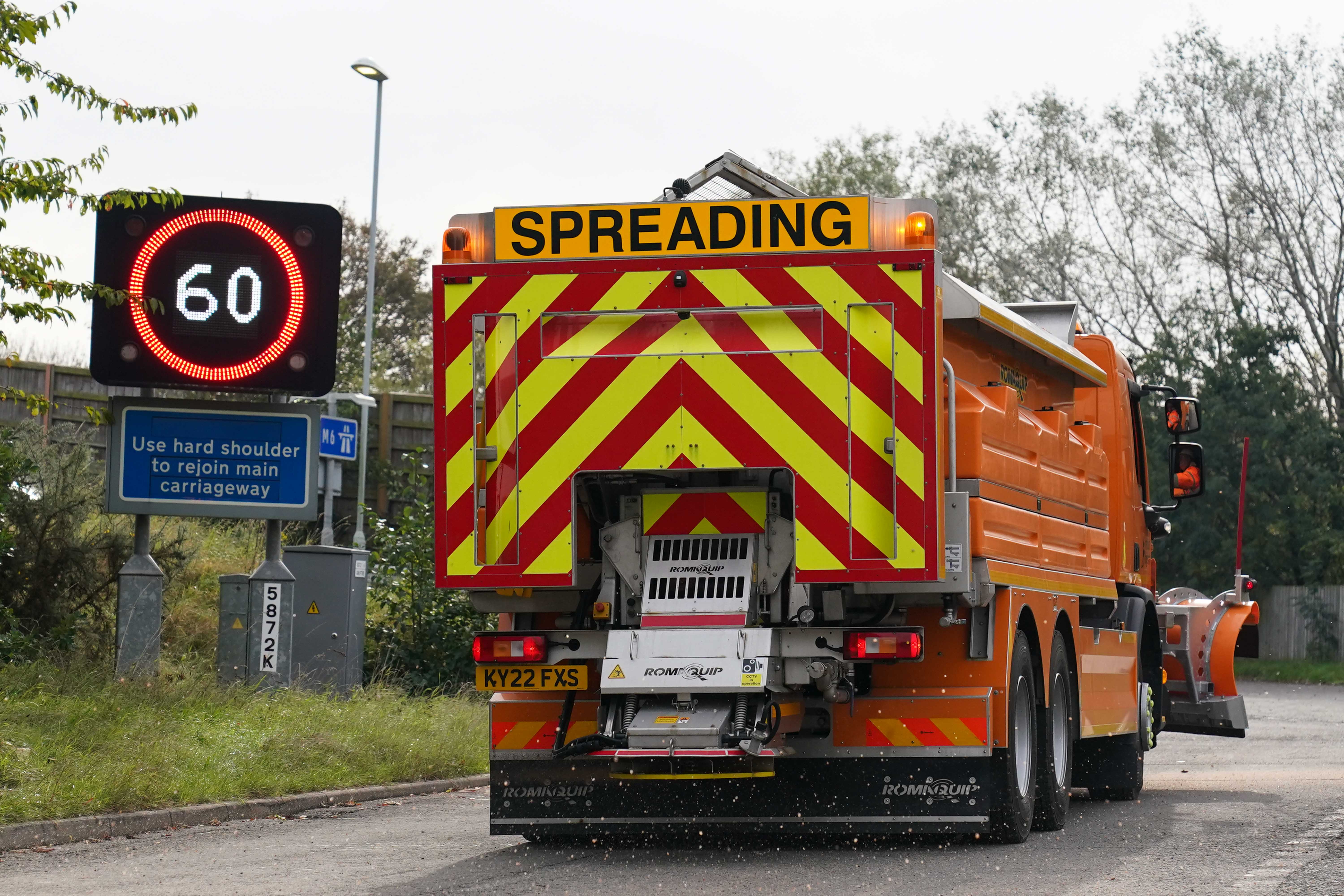Roadside weather station upgrades to boost gritting decisions
National Highways said it is investing £15.4 million to modernise 125 stations by the end of 2025.

Weather stations are being upgraded to enable road bosses make better decisions on when to deploy gritters.
National Highways, which is responsible for England’s motorways and major A roads, said it is investing £15.4 million to modernise 125 stations by the end of 2025, with the first coming into use this week.
There are plans for around 100 more sites to be revamped in the following five years.
Existing weather stations are up to 25 years old so lack the latest technology.
The new versions will provide more accurate data to improve year-round management of major roads.
They will have sensors assessing conditions in the atmosphere and on carriageways, with cables running between the stations and the roads.
Information on snow, ice, visibility, wind strength, flooding, temperature, humidity and rainfall will be relayed to National Highways’ control rooms across England, helping bosses make better judgments such as when to send out gritters or issue weather warnings to drivers.
Gritters spread rock salt on roads, which combines with moisture to prevent ice forming when temperatures drop below the freezing point for water.
Salt does not directly melt snow, so it is important gritters are deployed before snowfall.
Rachel Adams, head of winter maintenance products at Vaisala, the company manufacturing the new weather stations, told the PA news agency: “They are the eyes of National Highways on the road network.
“The data from the road weather stations goes to National Highways. Their winter maintenance decision makers use that to determine whether or not they need to send a plough truck out or a vehicle to put down salt on the road.
“The weather stations are designed primarily for winter use, detecting ice formation, cold temperatures and snow on the network.
“But the beauty of the sensors is that they also provide value to National Highways during the summertime as well.
“We can detect potential hazards from aquaplaning and also high winds.”
Katy Little, who is leading the upgrade project for National Highways, said: “We are excited to be investing in new equipment which will provide us with more accurate data from the roadside.
“The weather stations underpin our entire decision making and treatment regime, so are pivotal to us ensuring the network is safe and secure.”
The first upgraded station will begin operating on the A56 near Accrington, Lancashire, this week.
National Highways has a total of more than 530 gritters and 280,000 tonnes of salt at 128 depots across its network.
Subscribe to Independent Premium to bookmark this article
Want to bookmark your favourite articles and stories to read or reference later? Start your Independent Premium subscription today.
